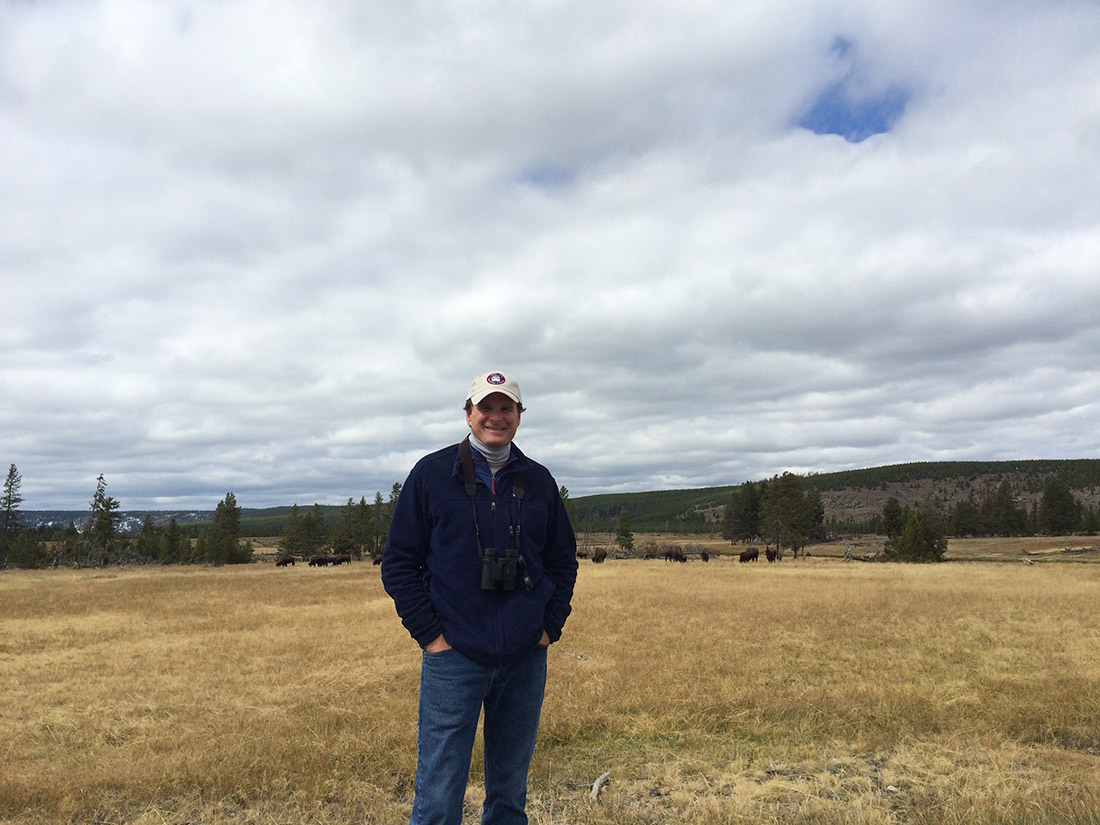By Dorothy Hastings
“THERE IS A COMMON LINE that runs through all the work I’ve been involved in, whether we’re trying to protect the climate, water, the Chesapeake Bay, longleaf pine, National Forest lands, or make lands more resilient to fire,” Robert Bonnie says. “It’s all a collaborative, incentive-based approach that recognizes it’s not just about lands, it’s about people.”
Bonnie has spent more than 20 years partnering with farmers, ranchers and foresters on conservation and land management solutions, and he tackles climate goals with a steadfast dedication to land and to people.
“Aldo Leopold said that he cared about two things,” he says, “the relation- ship with people to the land and the relationship with people to each other. That was true then and it’s still true today.”
Bonnie grew up surrounded by forests and wildlife on a farm in Kentucky, where he found outdoor interests and hobbies that laid the groundwork for his long career in conservation. Bonnie’s family has owned and managed forest area in South Carolina for more than a century, which exposed him early on to the issues farmers and foresters face on working lands.
Bonnie graduated from the Nicholas School of the Environment at Duke University with a joint master’s degree in forestry and environmental management and, in 1995, began working at the Environmental Defense Fund (EDF), where he later became vice president for land conservation. He was specifically interested in creating incentives for wildlife conservation for private landowners. By collaborating with rural stakeholders on conservation solutions that did not involve the usual regulations and restrictions imposed on their land, he saw ways to empower landowners instead of deterring them.
In his work at the EDF, Bonnie helped develop the Safe Harbor Agreements that now encompass more than 4 million acres across the U.S. The Safe Harbor program revolutionized approaches in conservation, restoration, and land and wildlife management by giving government incentives to private landowners who conserve rare species on their land.
Bonnie and a team of conservationists focused on restoring the red-cockaded woodpecker in North Carolina by rewarding private landowners who protected and improved the habitat of the endangered bird.
In 2009, Bonnie joined the U.S. Department of Agriculture (USDA) as a senior advisor to Secretary of Agriculture Tom Vilsack. From 2013 to 2017, he served as under-secretary for natural resources and the environment at USDA, where he continued to engage rural constituencies with conservationists to develop environmental policies that benefit everyone. He worked on projects covering watershed protection, climate change legislation, fire management, endangered species conservation, and forest restoration in our national forests.
In 2015, Bonnie collaborated with public and private landowners to incentivize conserving sage-grouse habitat in the Western U.S. The combined efforts of ranchers and state agencies resulted in a rebounding of the sage-grouse population that avoided their listing under the Endangered Species Act.
“You can’t regulate anybody into restoring habitat for an endangered species,” Bonnie says. “You can’t regulate them into planting trees to protect climate, and you can’t regulate them into protecting longleaf pine in the Southeastern U.S.”
Bonnie adds that while regulation can help in a few instances, we ultimately need landowners to make voluntary choices when it comes to protecting the environment. He believes the way we achieve that is by working collaboratively with landowners.
“We have more work to do to get the environmental community to under- stand what actually works in those rural communities.”
Since three-quarters of the land in the U.S. is privately owned, it seems obvious that solutions to species and habitat conservation must involve farmers, ranchers and private land-owners. But until recently, many environmentalists did not invite stakeholders in the forest and timber industries, or local communities, to be a part of the conversation.
Bonnie has continued to fight for collaboration and partnership with rural stakeholders through his work at the EDF, the USDA and now as a Duke University Rubenstein Fellow.
“We have to recognize that if farmers, ranchers and forest landowners are going to stay on the land, they’re going to need to get economic returns, and they’re going to need to make money for doing conservation, farming, ranching and practicing forestry,” Bonnie says. “One piece is that we need to have viable markets for wood, for farm products, for agricultural products…we need to figure out how we reward landowners for doing good conservation.”
Bonnie is confident that better managing our natural resources and our forests requires a serious investment in conservation on both private and public lands, an investment that is inexpensive and will mean large dividends in the future. Forests and agricultural lands are critical for solving climate change, for providing us with clean air and water, and mitigating greenhouse gas emissions. At the core of Bonnie’s work is the belief that all our livelihoods depend on how public and private lands are man- aged, and we will accomplish nothing working against each other.
“If we’re going to have resilient lands,” Bonnie says, “we need to have resilient communities and resilient economies and resilient people working on all of this.”
Dorothy Hastings was an American Forests summer editorial intern and is a senior at American University studying journalism with a minor in American studies.
